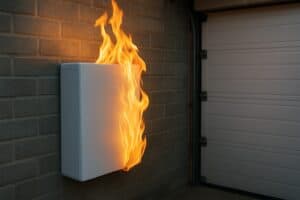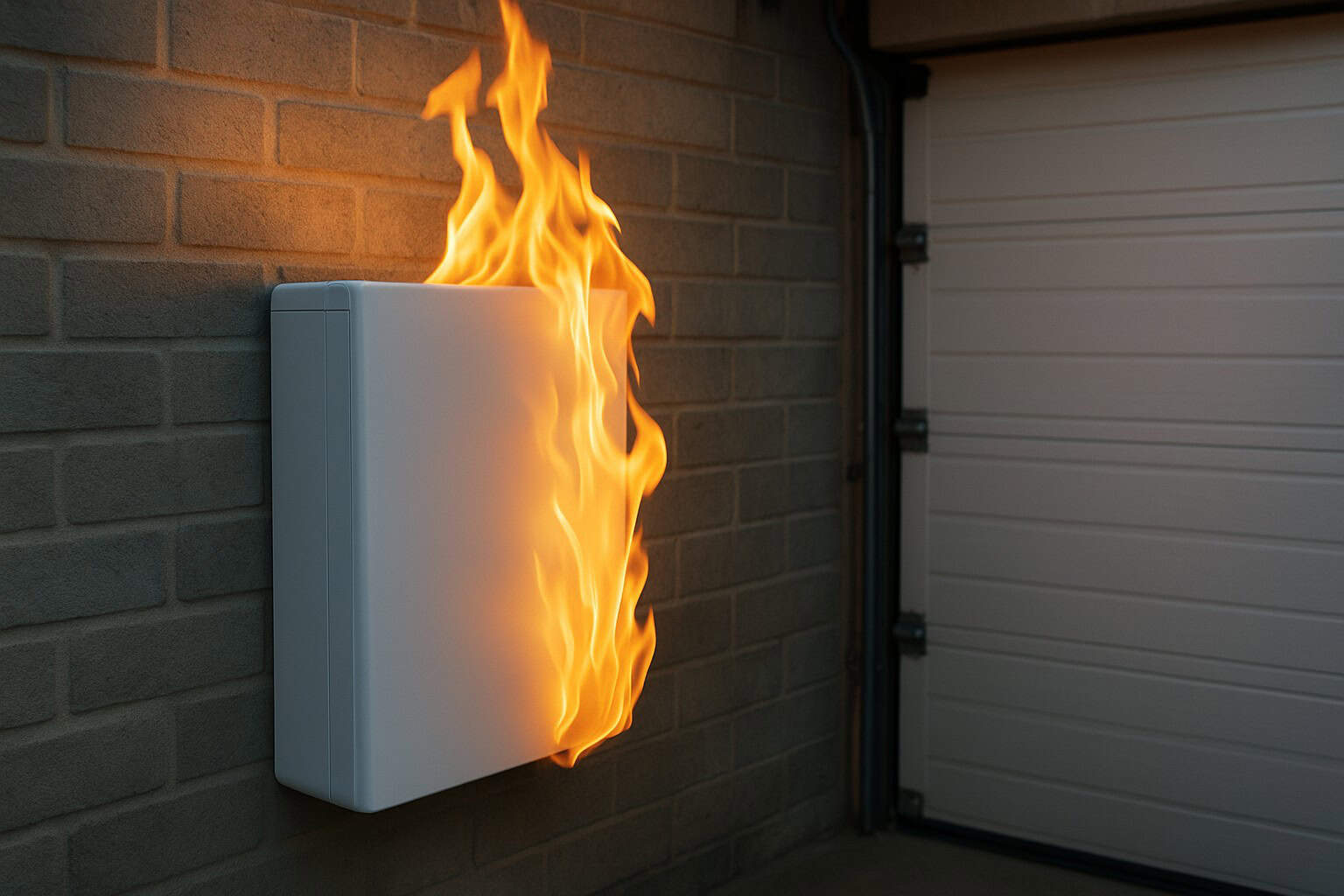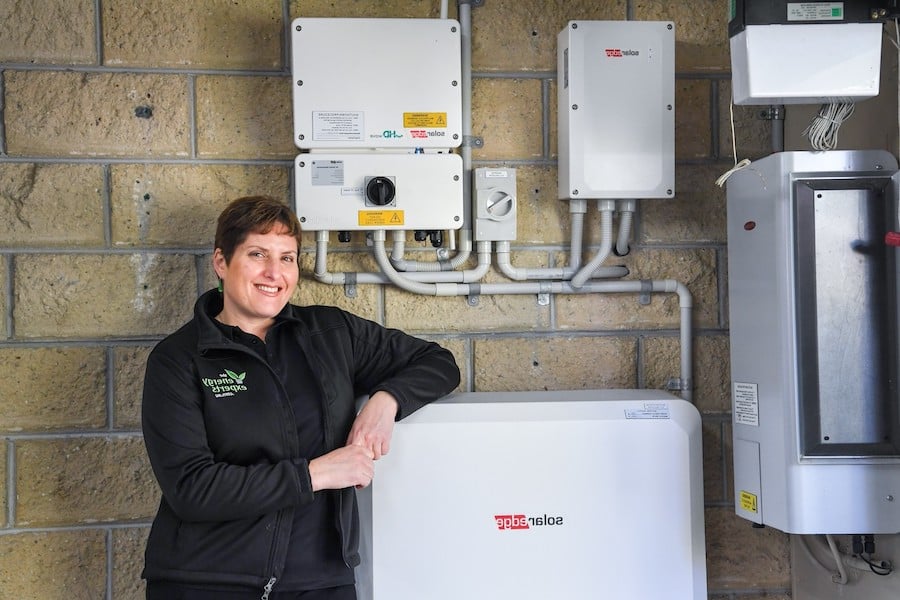The most recent data shows there were 23,796 battery storage systems installed in Australian households in 2020, which is a 5.2% increase on the year before, according to the Clean Energy Council.
So why are more and more Australians choosing to add battery storage to their solar power systems?
How battery storage works
A battery storage system allows you to store any excess solar energy that your PV system generates during the day and then use this when there isn’t enough solar power being generated to power your appliances. eg. early morning/evening/overnight when panels don’t work.
During the day your solar panels are soaking up plenty of sun; probably more than you will use at the time they’re generating. This is more likely if you no-one’s home during the day and there isn’t a big electrical load like a pool drawing lots of power. Rather than export your surplus solar to the grid for a fraction of what they charge you to buy your power from them, this energy is stored in a battery. In the evenings when you’re cooking, ironing, watching TV and running the air-con, you can use your stored energy to power these appliances.
Why battery storage is becoming so popular
Solar Feed-In Tariffs Feed-In Tariffs reduced by around 30% in 2021. These are the credits that are applied to your account each quarter for your surplus solar energy that you’ve sold back to the grid. This has been the biggest catalyst for the upswing in battery storage enquiries.
Australians are discovering other great benefits to storing their surplus solar energy:
- Being less dependent on the grid
A battery can allow you to store energy and power your home 24hrs a day, so you’re less dependent on the grid, less exposed to price volatility as well as blackouts when the grid goes down. The desire to be more self-sufficient has been fuelled by brownouts and blackouts in certain areas and the devastating 2019/2020 bushfires that knocked out power in many locations. With these extreme weather events becoming more likely, more and more Australians are determined to be more self-reliant.
- Generating an income from your battery
Many people who invest in battery storage opt to join a Virtual Power Plant (VPP). By joining a VPP, where your home’s battery becomes part of a large network of household batteries, your provider can ‘borrow’ some of your stored energy in times of peak demand and on-sell it to the national grid for a profit. When this occurs, your energy provider compensates you handsomely. And when there aren’t periods of peak demand, you still get paid a Premium Solar Feed-In Tariff whenever your battery is full and you have leftover solar energy to export.
Joining a VPP can help reduce the payback period on battery storage by as much as 2 years.
Is battery storage right for you?
Battery storage will suit you if you already have a minimum 4kW system and:
- You’re not home much during the day and/or you’re not able to use much of your electricity during the day.
- Your Solar Feed-In Tariff is much less than what you were initially offered and the credits you’re receiving aren’t covering as much of your bill anymore.
- You want to reduce your dependence on the grid and be protected against blackouts.
- You want your home to run on renewable energy as much as possible.
- You want to slash your electricity bill beyond what a solar power system alone can achieve.
Larger battery storage systems can be pricey, so it’s good to know there are more affordable alternatives to batteries that can help you achieve a similar financial result, such as:
- Solar energy diverters allow you to divert any surplus solar energy to preheat your electric hot water system before exporting the remaining excess to the grid. This means your hot water system doesn’t need to run for as long overnight because the water has already been pre-heated by the free electricity generated by your solar panels. It effectively turns your electric hot water system into a solar hot water system.
- Smart relays can be connected to many electrical appliances. When there’s surplus solar energy, these clever units can switch on equipment like air-conditioning, pool pumps and heat pumps. Should a cloud block the sun and your solar production suddenly decreases, the smart relay will stop sending surplus solar energy to the appliance.
A decent size battery (10kWh-14kWh) typically costs between $9,500 and $15,500, while these types of units cost around $1200 – $1300.
Want to take control of your power? Invest in battery storage or consider a diverter or smart relay. Get an online quote or call The Energy Experts on 1300 516 474 or email save@theenergyexperts.com.au.















